All images courtesy of Tommy Thayer

By Andrew Daly
andrew@vinylwriter.com
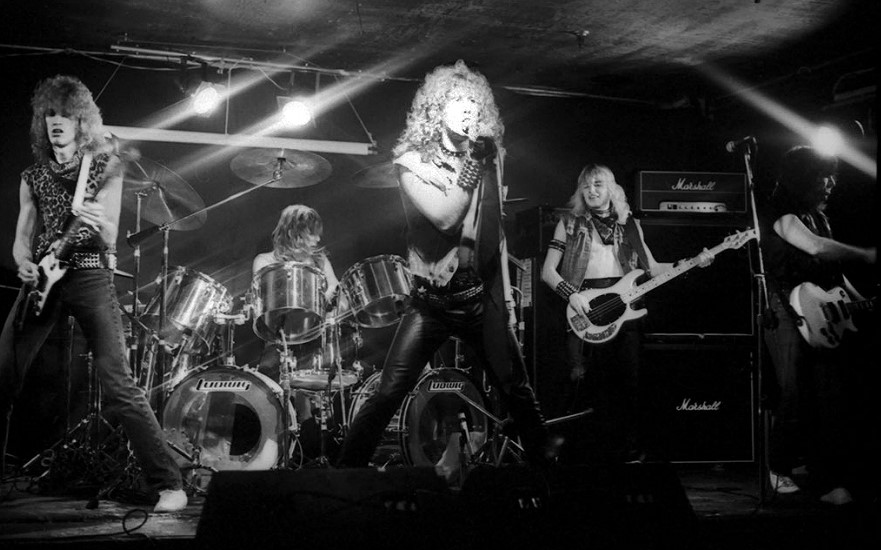
A tremendous amount of attention is given to Tommy Thayer’s career as KISS’ lead guitarist, and rightfully so. This said, if we dig deeper and peel back the proverbial onion, we uncover an over forty-year career in music through which Tommy Thayer has made a truly massive impact on hard rock and heavy metal music.
Through humble beginnings in Portland, Oregon, Tommy Thayer cut his teeth as a young musician playing saxophone in his high school band, before eventually meeting his musical cohort, Jaime St. James, and forming several bands in The Police, The Force, Movie Star, and eventually, the mighty Black ‘N Blue.
As the 80s dawned, Black ‘N Blue hit The Strip, and after a triumphant spell on the LA club scene, Black ‘N Blue quickly garnered major label attention, ultimately signing with Geffen Records for a four record deal. It wasn’t long before Black ‘N Blue had two records, and two major supporting slots under their belts with Aerosmith, and KISS, but still, the band felt repressed by Geffen’s Pop leanings and the resultant pressures associated with those expectations.
As the 80s came to a close, Thayer, and Black ‘N Blue, sought to harden their image and chose to work closely with KISS co-founder, Gene Simmons, in doing so, and Black ‘N Blue rounded out the decade with two final albums featuring Thayer before the group disbanded in 1989.
As something of a free agent, Thayer began working with KISS as a songwriter for their Hot In The Shade record and went on to co-produce, and record lead guitar with Doro Pesch for her album, Doro, and for Tommy Thayer, the rest, as they say, is history.
In this early career-focused interview, Tommy and I chat about, among other things, meeting Jaime St. James, and the beginnings of their friendship, the formation of Black ‘N Blue, the band’s trials and tribulations throughout the 1980s, working closely with Gene Simmons, Doro Pesch, and Carmine Appice, his potential future with Black ‘N Blue, and a whole lot more.
If you would like to learn more about Tommy Thayer, you can head over to his webpage, or you can follow him via Facebook, Twitter, and Instagram, and of course, don’t forget to follow KISS as well for all the latest news regarding their End Of The Road world tour.
Andrew:
Tommy, thanks for taking the time. Last time we covered the basics and KISS, so this time, we wanted to dig into the origins of Black ‘N Blue, as well as some of your other side projects. But first, how have you been?
Tommy:
Doing well, thanks!
Andrew:
Going all the way back now, how did you and Jaime St. James first meet? You and Jaime seem to speak the same musical language. This said, was the chemistry apparent right away? Or did it develop over time?
Tommy:
I’d see Jaime at concerts at the Paramount Theatre in downtown Portland when we were both in high school, but I didn’t know him. We lived at different ends of town. I’d see this crazy guy with tons of blond hair, dressed in thigh-high platform boots, glitter shirts, and feather boa scarves. Another time I saw him at the Rose Festival parade in Portland. I was playing sax in my high school marching band, and he was playing drums in his school band, and I thought, “There’s that guy again!” Right after I graduated, my friend Todd Jensen gave Jaime my phone number because his band was looking for a guitar player. So, I drove down to his rehearsal place at a paint shop in Portland. Keep in mind Jaime was the drummer and singer in the band. It was Jaime, and Julian Raymond who played bass and sang, and a guitar player named V. Ripper. I played a few of their songs with them and a couple of ACϟDC covers, and they liked me and asked me to join. But their band was called “Hell,” with this whole demonic image and stage show which I didn’t really care for, so I said, “Thanks, but no thanks.” The next day they called me and said they’re going to change the name and start something new and asked again if I’d join, and I finally said, “Yes.”
Andrew:
Before you were officially called Black ‘N Blue, I believe the band went by Movie Star. Take me through those early days as a band, and the evolution which led up to the official formation of what became known as Black ‘N Blue.
Tommy:
Jaime, Julian, and I started a band and called it “The Police,” a couple of months later we realized there was a new band out with the same name. [Laughs]. So, we changed to “The Force,” and then by late 1979 to “Movie Star.”
Andrew:
When and how did the band shift to Black ‘N Blue? What’s the origin of the name? What sort of image were you guys going for in those early days, which predated the full-on glammed-out age that was to come?
Tommy:
Movie Star was an interesting combination of styles; it was loud Rock guitars mixed with Power Pop and an almost new romantic style. The look was strange because you had two guys that didn’t want to cut their hair and looked like they were in Van Halen or Judas Priest, that was me and Jaime, and a couple of others who wanted to look like Duran Duran or the band Japan. We had written some great songs, but again, everything about it was confusing. Eventually, Jaime and I got to a breaking point with the others and decided we should probably start our own new band, that was November 1981. We thought of the name “Action,” but we ended up calling the band Black ‘N Blue, I think we liked the denim and leather tie-in.
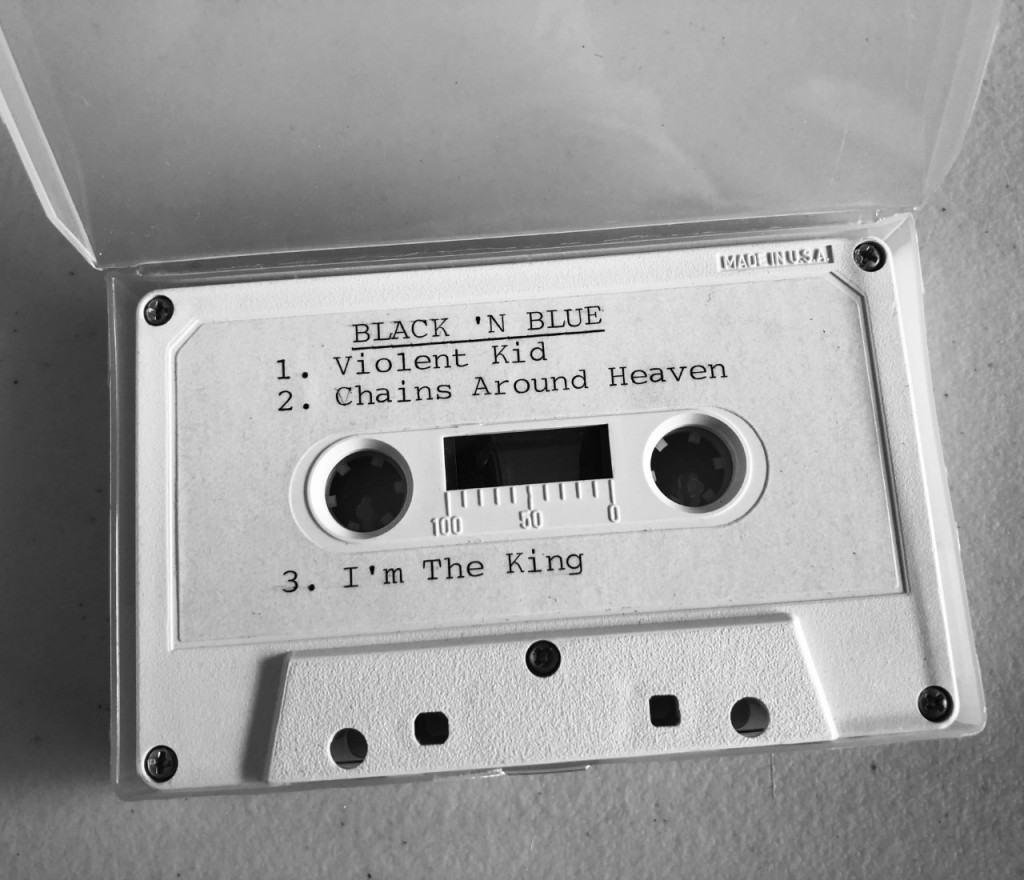
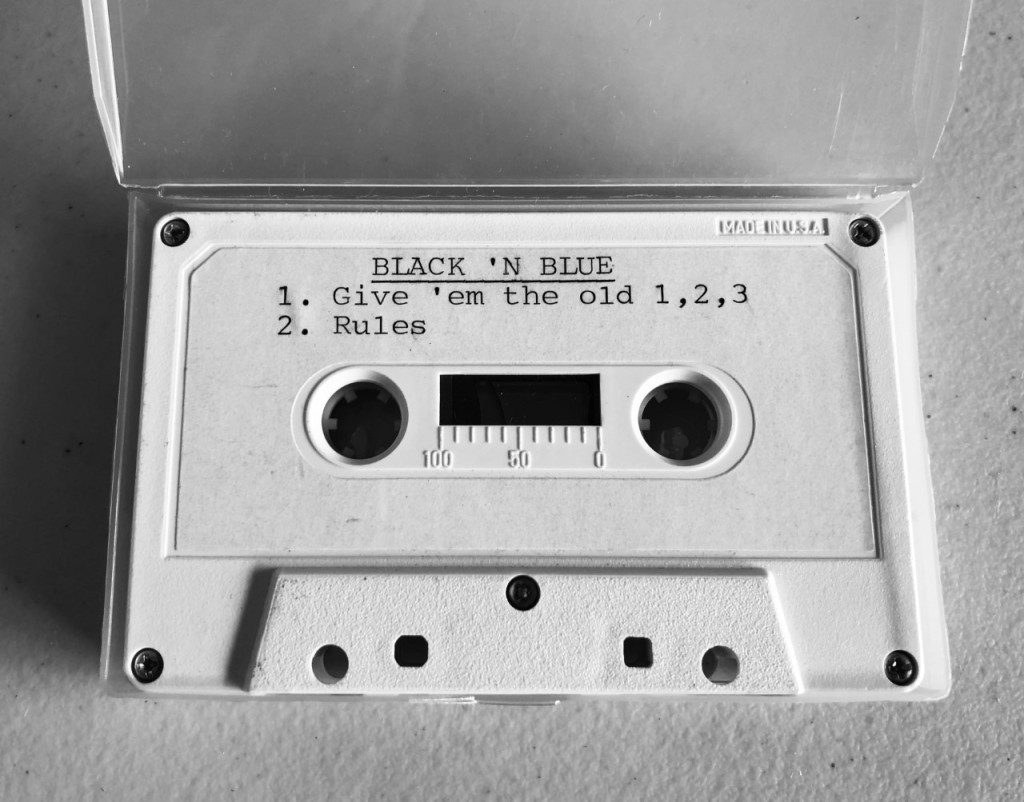
Andrew:
Brian Slagel of Metal Blade played a big part in the discovery of Black ‘N Blue, right? Take me through the recording of “Chains Around Heaven,” and how it ended up in Brian’s hands.
Tommy:
There was an underground Heavy Rock/Metal culture starting up in the early 1980s. We paid a lot of attention to the New Wave of British Heavy Metal and that influenced us a lot. We recorded demos of our songs “Give ‘Em the Old 1,2,3,” “Rules,” and “Chains Around Heaven” at a tiny studio in Portland called Recording Associates, and sent them out to anyone who would listen. Our demo ended up in the hands of Brian Slagel. Brian had a Metal fanzine called The New Heavy Metal Review, and he wrote about us. Not long after that, he asked to add the demo of “Chains” to a new Metal compilation he was putting together called Metal Massacre. That first edition of Metal Massacre included us, Metallica, Steeler, Ratt, and a bunch of other young metal bands looking to make it.
Andrew:
Black ‘N Blue hit the Sunset Strip in the early 80s and seemed to make a quick name for itself on the club scene. If you can, paint a picture of those early club days, and the overall scene on the strip at that time.
Tommy:
Once Black ‘N Blue started, we made trips back and forth from Portland to LA throughout 1982 to play opening slots on Wednesday nights at clubs like The Troubadour, The Whisky, and The Roxy. In January 1983 we loaded our guitars, amps, drums, and mattresses in our 1968 Ford truck, and headed south to Hollywood for good. The Hollywood Rock scene was starting to explode, and it was this great combination of new bands and lots of girls. Once we got there, things happened fast, and we were soon headlining our own weekend nights at the same clubs with kids lined up around the block.
Andrew:
The band signed with Geffen Records relatively quickly. What led to the decision to go with Geffen, and in retrospect, were they the right label for Black ‘N Blue?
Tommy:
It did happen quickly for us. By July 1983, we had several major labels looking at us, and Geffen stepped up and signed us. It was something I’d dreamed about for years, and I couldn’t believe it was happening. We should have got into the studio quicker, recorded our album, and released it that same year, rather than waiting for producer Dieter Dierks who was finishing the Scorpions latest record (Love at First Sting). It took almost fourteen months from when we were signed to when our first album was released. I remember standing in The Troubadour bar, talking to Robin Crosby right after we signed our deal, and he offered to buy me a congratulatory Heineken. Robin had befriended us the summer before, letting our entire band stay at the house where he lived said, “Dude, I sure hope our band gets a deal soon!” He was a good guy. Ratt’s first album came out six months before ours did. Geffen was obviously a great label with a lot of firepower, but besides Sammy Hagar, they didn’t have any Hard Rock/Metal bands at the time. John Kalodner signed us and was a big supporter, but he did push us in a very commercial direction rather than let us be us. In the end, Kalodner stuck with us, and Geffen released four albums with us.

Andrew:
1984 was a banner year for Black ‘N Blue with the release of the band’s debut record, Black ‘N Blue. This said, what can you tell me more regarding the delays in recording the record? You mentioned Robin Crosby, I know that Ratt also recorded their debut record, Out of The Cellar that same year, and ended up jumping on tour with Ozzy Osbourne to promote it in place of Black ‘N Blue. Can you dig into that for us? How big of an effect did losing the Ozzy tour have on Black ‘N Blue’s momentum?
Tommy:
I should mention, right after we were signed, we did go into Bill Schnee’s studio in LA to try recording with Danny Kortchmar and Greg Ladanyi producing. Kalodner set it up. The problem was, as much respect as we had for them and the success they’d had with Don Henley and others, we didn’t feel we had any connection with them stylistically. It didn’t feel right. After a few days, we all agreed it probably wasn’t the right match. So, we decided to wait another four more months for Dieter. If we had been faster out of the gate to record and release our first record, we would have been much better off. One day, a couple of months before our first album was released, we were hanging out at our manager Garo’s pizza restaurant and he said, “Here’s your album cover.” We were shocked because we hadn’t seen or heard anything about what the concept was, or sketches or anything, and suddenly there it was, the finished cover. We had taken photos of us holding a flag, which when finished would be the ‘Black ‘N Blue flag. We thought that was a cool idea but that was it. An artist had done a paint-over of the photo, which made us look weird and animated looking. Jaime and I hated it.
Andrew:
Black ‘N Blue did end up hopping on tour with Aerosmith, for what I believe was their Done With Mirrors tour, right? I know Aerosmith was recently reformed, and far from clean and sober at that time. Can we dig into what your experience on tour with them was like?
Tommy:
When you’re a new band out of the gate, booking agencies start looking at you and speculating if you might have the potential to do well. One was Monterey Peninsula Artists, who handled Aerosmith. I believe they offered us some dates with the idea that we’d sign with them to represent us. Next thing we know, unbelievably, a tour bus picks us up at our manager’s house in Beverly Hills and we’re heading to Phoenix to start a run opening for Aerosmith. We were kids from Portland, who before we knew it were playing an arena tour opening for a band we idolized growing up. We were so excited that towards the end of our set, the first night, in front of a packed Phoenix Veterans Memorial Coliseum, Jaime announces, “We’re Black ‘N Blue, we’re at the Holiday Inn and you’re all invited to party at our hotel after the show.” An insane amount of people showed up, and we were promptly escorted out of town by the Phoenix police. What a way to start the tour! Aerosmith had just reformed with Joe and Brad, and it was called the Back In The Saddle tour. John Kalodner was there a lot looking to sign Aerosmith to Geffen Records. I think Tim Collins had recently started managing them, and they hadn’t gotten to the clean and sober stage yet. Steven was cool, took time to chat, and encouraged us. Fall of 1984 was a great time doing those shows with Aerosmith, but it all ended abruptly when the Geffen people said, “No more touring, we want you back in the studio to do your next album.” We were like, “What? Our first album just came out a couple months ago!”

Andrew:
Black N’ Blue’s follow-up, Without Love, is a classic record, and certainly influenced bands such as Bon Jovi and the like going forward. While the record was a bit softer, its sound and production seemed to predate what was to come. With all that being said, what are your thoughts on the record in retrospect?
Tommy:
We always had a great time, but never more fun than recording Without Love in Vancouver, BC. The cool thing about John Kalodner was he’d say, “Who do want to produce your album?” and invariably he’d make it happen. This time, we said we really liked Bruce Fairbairn, who had done some sonically great sounding records. Kalodner said, “Well you should consider using his engineer, Bob Rock, as producer, he’s up and coming.” We said, “Never heard of him, we want Fairbairn.” So, we ended up in Vancouver, in February 1985, to start recording with Bruce, and his engineer, Bob Rock. It didn’t take long to realize why Fairbairn’s records sounded so amazing, we quickly bonded with Bob, and were blown away with his drum and guitar sounds. As a matter of fact, everything about it sounded amazing. He had drum room mics set up in the loading bay, and he had custom Hiwatt amplifiers for me to play through. Bob blew us away. Not only that, but it was also Bob who introduced us to the Vancouver nightlife, that’s a whole another story. [Laughs].
But the same issues came up with the record label, they wanted to keep pushing us to be Pop and more radio-friendly. We wanted to call the record Bombastic Plastic and had a cover design sketched out. Nope — they said, “That’s not going to happen, it’s going to be called Without Love.” Somehow, the album cover became black and blue roses, with a ridiculous photo of us holding a pillar on the back cover. We had a cool “Ballroom Blitz” kind of song called “Blame It On The Neighborhood.” They said, “No, we want you to rewrite it and call it “Swing Time,” and added tap dancers.” “Rock And Roll Animals” was changed to “Rockin’ On Heaven’s Door.” We didn’t seem to have the balls to tell them to let us be us. Through all the confusion of who we were as a band, it was still an amazing sounding record with great songs. Jon Bon Jovi told us he liked the sound of our cassette better than his then-current CD and was the reason he hired Bruce and Bob and went to Vancouver to record Slippery When Wet.
Andrew:
The tour for Without Love is notable as it seemed to officially begin both your, and Black ‘N Blue’s association with KISS. I think it’s safe to say that touring with KISS in the 1980s was an entirely different animal than touring with Aerosmith, right? Take me through your supporting role on KISS’ Asylum tour, and the events that led to Gene Simmons producing Black ‘N Blue’s next two records.
Tommy:
I think Without Love came out in September 1985, and it was around that time our newly hired manager, Warren Entner, called me at my apartment in Sherman Oaks, and told me we’d been selected to do twenty-something shows opening for KISS, starting in November. It was another one of those, “Is this a dream and I’m going to wake up soon moments?” When we arrived at the arena for the first show in Little Rock, we were hanging around. Gene approached us and was friendly, immediately talking to us, Bruce was cool, and we talked a lot about guitars. The second or third day in Memphis, we were hanging around and Gene pulled Jaime and me aside and said, “You know that intro you did last night? Well, there this band that’s been around since 1903, and it sounds too similar to their intro, you might consider changing it.” The tour was an eye-opener, we played all the big places, the Summit in Houston, the Spectrum in Philly, and Madison Square Garden in New York City. We finished New Year’s Eve 1984 in Atlanta.
The first week of January 1985, we got a call from the record company, they said, “You’re done touring for now; we want you to start on your next record.” I thought, “Wow, didn’t Without Love just come out a few months ago?” So, we started writing songs and doing more demos. A month later, we found out we were going to open one more show for KISS in Las Vegas the following week. We’d been talking a lot about Black ‘N Blue’s image and sound, and wanted to get back to where were before Without Love. We thought, “When we’re in Vegas, we’ll ask Gene if he’d be interested in producing our next record.” Somehow, we got word to him that we’d like to sit down and play him the demos we’d been working on. A meeting was set for after the Vegas show in Gene’s suite at Caesars Palace. At that point, I don’t think any of us had been in a hotel suite like that. While we were there, I think Gene was trying to impress us, calling his road manager to arrange a $10,000 marker for gambling after the meeting. [Laughs]. We played him our new songs and said, “What do you think?” He said, “I’ve got a big mouth, I’ll tell you what I think, yes I’ll produce you.”

Andrew:
Nasty Nasty saw Black ‘N Blue return to its earlier, heavier roots. Was that a conscious choice and did Geffen Records give the band a lot of blowback for forgoing the softer, more commercial sound? As many fans know, KISS’ “Only You,” Black ‘N Blue’s “Nasty Nasty,” and KISS’ “Domino,” share an interesting lineage. Can you dig into that for me? How did the sharing of riffs take place?
Tommy:
Gene was diligent and committed, he was on tour but would fly into LA for preproduction rehearsals with us on every one of his days off. He wrote with us and made us think more about what kind of statement we’re making as a band, which is what we needed. I had the riff for the song “Nasty Nasty,” and originally, had the title “Quiz Kid,” thinking a kind of Who-ish Tommy-era kind of idea. Gene was funny, he said, “That blows!” We eventually ended up calling it “Nasty Nasty.” The song was near done but we needed a middle part and Gene says, “I’ve got something,” and plays us this cool riff that we ended up using. Later, I hear someone say, “Hey that “Nasty Nasty” is a cool song, but you sure ripped off KISS with that middle part.” I’m like, “What?” They said, “Yeah, it’s a direct rip of “Only You” from The Elder!”
A month later, after the album was recorded, and mixed, John Kalodner told us he had another song for us to record called “I’ll Be There For You,” written by Jonathan Cain. It was to be included on a movie soundtrack he was supervising, for a new film being released called Out of Bounds. We thought, “Great, let’s do it.” The song turned out great and we were happy with it. It was poppier than we might have wanted, but since it was just for a movie soundtrack, we were fine with it. The next thing we know, we hear it’s not going to be on the soundtrack, but going to be added to Nasty Nasty instead! So much for making a clear statement for what the band’s about.
The artist, Hugh Syme, was hired by the label to do the album art. Hugh was well known for his work with Rush and had done incredible stuff, but I thought the Nasty Nasty cover, and new band logo he designed was too graphic looking for us, I didn’t love it. Again, we should have been more assertive and demanded to be more involved in the creative process, and design of the artwork. In our defense, we were young, learning how it all worked, and probably afraid if we didn’t go with the flow, they’d drop us. So, in too many cases we didn’t push it.
Andrew:
Black ‘N Blue’s final record of the 80s, In Heat, is perhaps the band’s finest hour, but ultimately, the band broke up a year after its release, in 1989. Black ‘N Blue was both yours and Jaime’s baby, take me through the decision to dissolve Black ‘N Blue.
Tommy:
For In Heat, we hired Gene again to produce, and I think we felt we might have been on our last leg with Geffen at that point. Again, Gene was diligent and spent a lot of time with us, we always felt he was behind us and got us. He was great. The album was cool and rocked, not too over-produced, it felt good. We all liked the title In Heat, and with us shirt-less on the cover, it kind of reminded me of a Deep Purple In Rock or Burn kind of cover. Besides the Hugh Syme logo, our fourth cover was the only one I liked. The enthusiasm and support from the label weren’t quite there anymore, the tour support had dwindled. We were playing third slots on smaller tours at that point. No more shows with Aerosmith and KISS.
I remember being on tour the summer of 1988, and Kalodner called to tell me, regretfully, that Geffen wasn’t going to continue as our label. He seemed like he really cared, and did everything he could to help us in the five years we worked together. I was getting frustrated up to that point too, Jef Warner and I had gotten into a fight backstage somewhere, so there was tension. It also seemed that everyone was losing the hungry “I’ll do anything” attitude, and just coasting along expecting something to happen. A couple of the guys resented that I was always the take charge, take control guy, but I knew if I left it to them, nothing would probably happen.

Andrew:
Take me through what appears to be the beginning of your partnership with KISS in the form of your songwriting, and guitar contributions to KISS’, Hot in The Shade.
Tommy:
In the several years that Gene worked with us, he seemed to gravitate towards me and Jaime more because we were the songwriters, so it seemed natural when he asked me to write with him, and knock ideas around when he needed songs for the next KISS record. I was thrilled and worked hard with him to come up with two songs that ended up on Hot In the Shade. I also think Gene liked my knowledge of KISS, my ideas and ability to get things done, and most importantly, my work ethic. He had other song ideas, old and new he was working on and needed someone to play guitar on his demos. Gene did a lot of demos. I didn’t think about it at the time, but my style of guitar playing fit well with what he was doing. I’d also offer opinions on the arrangements and the sound.
Andrew:
Another record which you performed the lead work on but isn’t talked about nearly enough is Doro Pesch’s 1991 record, Doro, which included yourself on guitar, Chuck Wright on bass, and the underrated Kevin Valentine on drums. Take me through those sessions, and how you ended up working with Doro. Was there talk of you hitting the road with her?
Tommy:
After writing and demoing with Gene for a while, he called me from the road one day and said he’d like me to be an associate producer, along with Pat Regan, on the next Doro Pesch studio album. I was flattered he asked because I knew he liked what I could do in the studio. Gene came into LA a few days later, and we had a meeting to outline what our roles would be, what the schedule would be, and what I was going to be paid, which was much more than what I thought it would be. [Laughs]. Pat Regan and I began pre-production and then recording with Doro, Gene was there some of the time, but after a while, Pat and I realized it was he and I were doing the heavy lifting, which was fine. We’d record and then play tracks for Gene over the speakerphone while he was on the road. Pat and I brought in a great lineup of drummers and bass players. I did almost all the guitars. Doro was fantastic and we’re still friends to this day. She was funny, and on most nights, when Gene was there, Doro would pull me aside just before we were leaving the studio, and would always ask if I could give her a ride back to her hotel instead of Gene. She said she’d get so nervous with him, which I understood because he was a terrible driver.
Andrew:
I also wanted to touch on your recent collaboration with Carmine Appice for his fantastic Guitar Zeus project. Tell us more about your working relationship with Carmine, and the fantastic track, “Mystified.”
Tommy:
In the last year or two, I’ve written and recorded eight songs with my friend Jason Scheff. We’ve really enjoyed the process as friends, doing something just for fun. I decided to reach out to Pat Regan to do a string arrangement for a song we were finishing. I hadn’t talked to Pat in years, we had done so much work together back in the 1980s and early 90s. I called him, and he came out to Jason’s studio in Moorpark, CA. While we were working, Pat asked if I’d be interested in doing a guitar solo on Carmine Appice’s Guitar Zeus project, which Pat had been doing some recording and mixing for. I said, “Of course.” He called Carmine on the spot, and we set it up. I’ve known Carmine for a long time, but we hadn’t talked in a while. Back in the early 1980s, when Black ‘N Blue first got to LA, Carmine saw us play at The Troubadour, and then afterward he came upstairs to the dressing room to say hello to us. I was impressed by how friendly, and encouraging he was to this unknown group of kids from Oregon. He didn’t have to talk to us, but he did. Once Carmine sent me the track, he told me he knew a guy named John Payne who has a studio in Las Vegas where I was living now, and I could go over to his place and record it. I basically just ran through it two or three times and that was it. I didn’t prepare too much, it was off-the-cuff. Blow and go.
Andrew:
You’ve reunited with Black ‘N Blue a few times over the years, most recently on this past fall’s KISS Kruise. This said, Jaime, is on record as saying he does not want to make another Black ‘N Blue album without you. So, with KISS’ time slowly winding down, is a potential Black ‘N Blue reunion in the cards as a studio, and/or live band?
Tommy:
I don’t plan on recording something new with Black ‘N Blue at this point. They played on the KISS Kruise X in November, and we had a blast. I got up and jammed with Jaime, Patrick, and the guys for the first time in probably ten years. We went to dinner a couple of nights and had a great time.
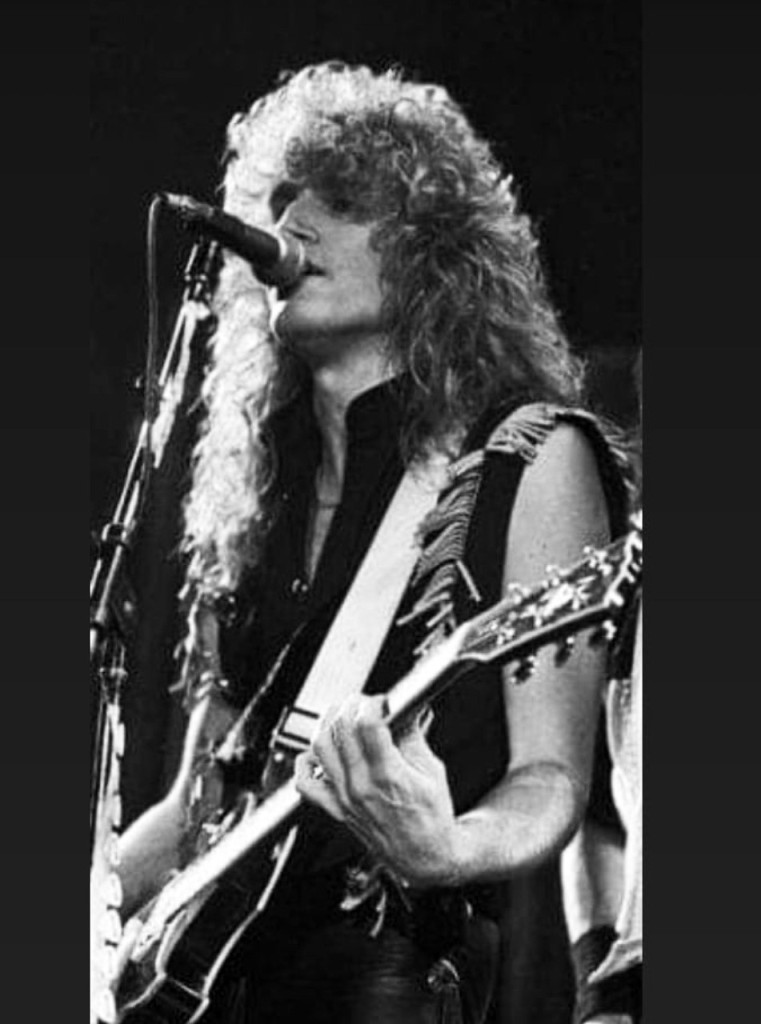
Andrew:
There is a huge groundswell for 80s Rock, Glam, and Hair Metal these days. This said, there are so many underrated legends who simply do not get their due. Most fans know you from KISS, but too few fully understand the depth of your body of work pre-KISS. This said, for those fans, what message do you have regarding the 80s Rock era, Black ‘N Blue, and your contributions?
Tommy:
I’ve always loved writing with Jaime. We just uncovered some unreleased songs that he and I wrote, and recorded in late 1989 that are great. He and I had toyed with the idea of doing something together right after Black ‘N Blue, but we both ended up doing different things, looking for something new at that point. We talked last week about releasing some of those unreleased tracks sometime, which might be interesting.
Andrew:
Last one. I want to thank you for digging in with us again today. It’s always fantastic to celebrate the history. What’s next on your docket, Tommy?
Tommy:
KISS is taking some time off and preparing for starting up the End Of The Road world tour again this March, in Australia, April and May in South America, and Europe in June and July. When I’m home, I’m always itching to get back out on the road, doing what I love doing. I’ve been so fortunate.
Interested in diving deeper into the work of Tommy Thayer? Check out the link below:
Dig this interview? Check out the full archives of Vinyl Writer Interviews, by Andrew Daly, here: www.vinylwritermusic.com/interview
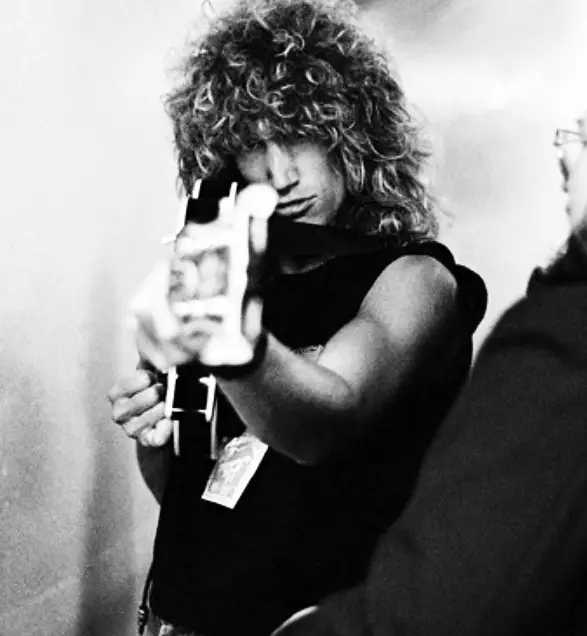
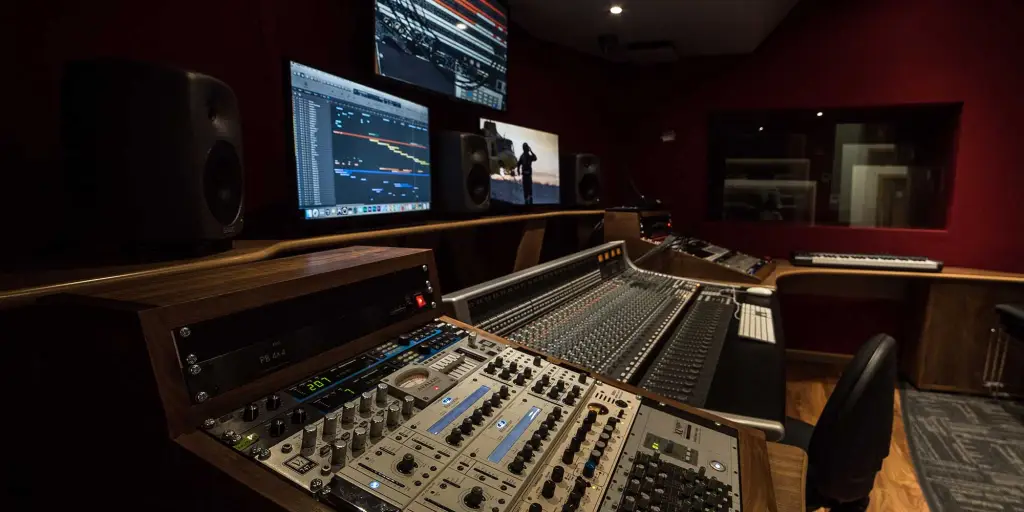

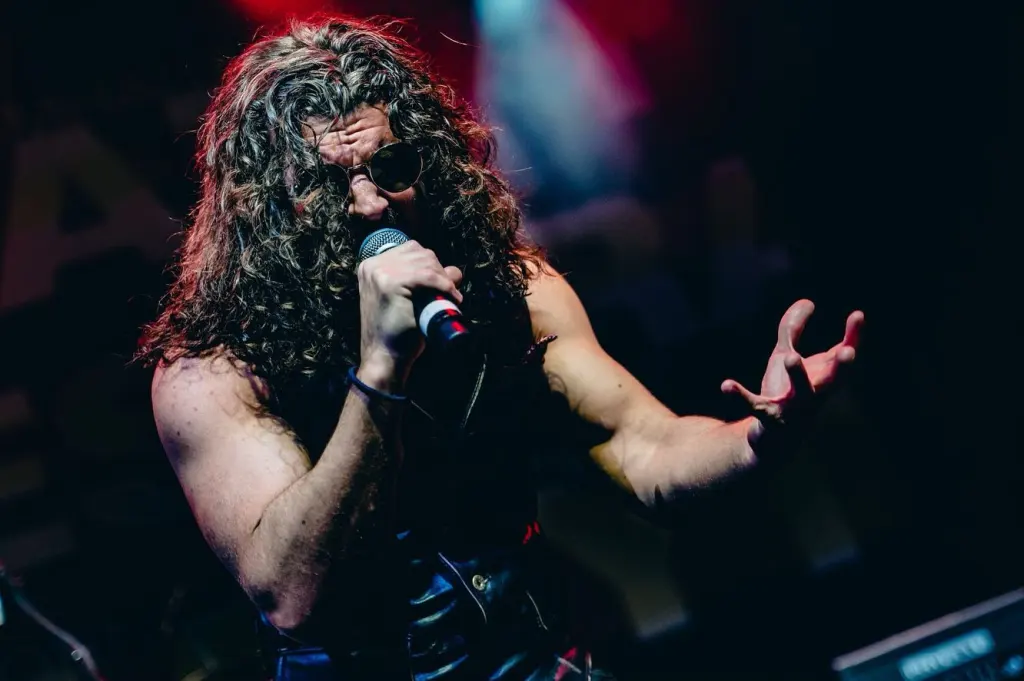
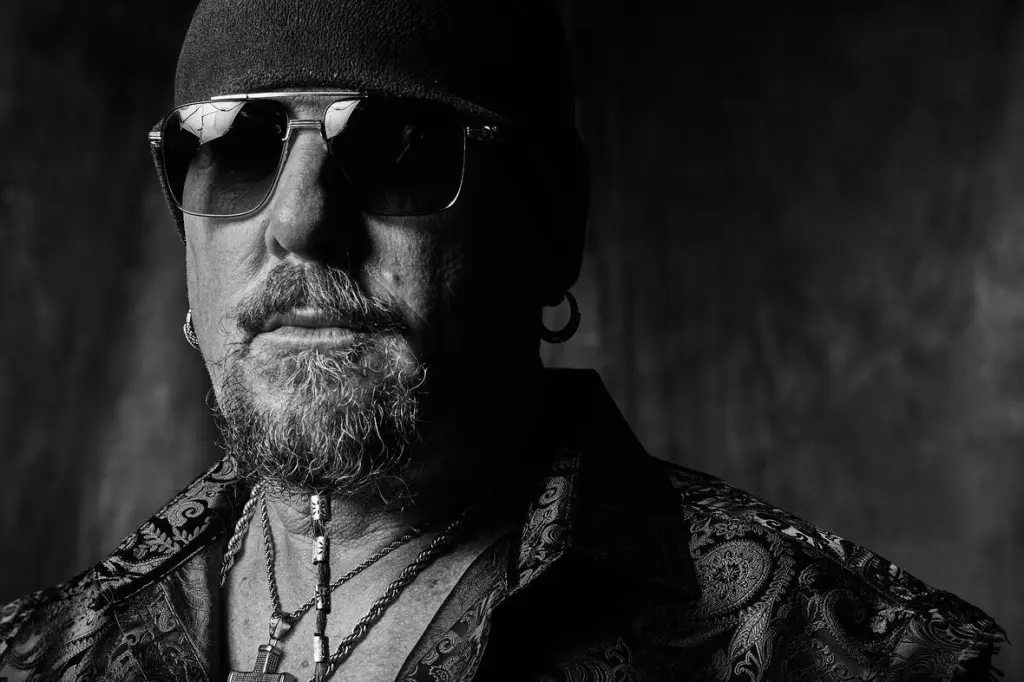
Leave a Reply